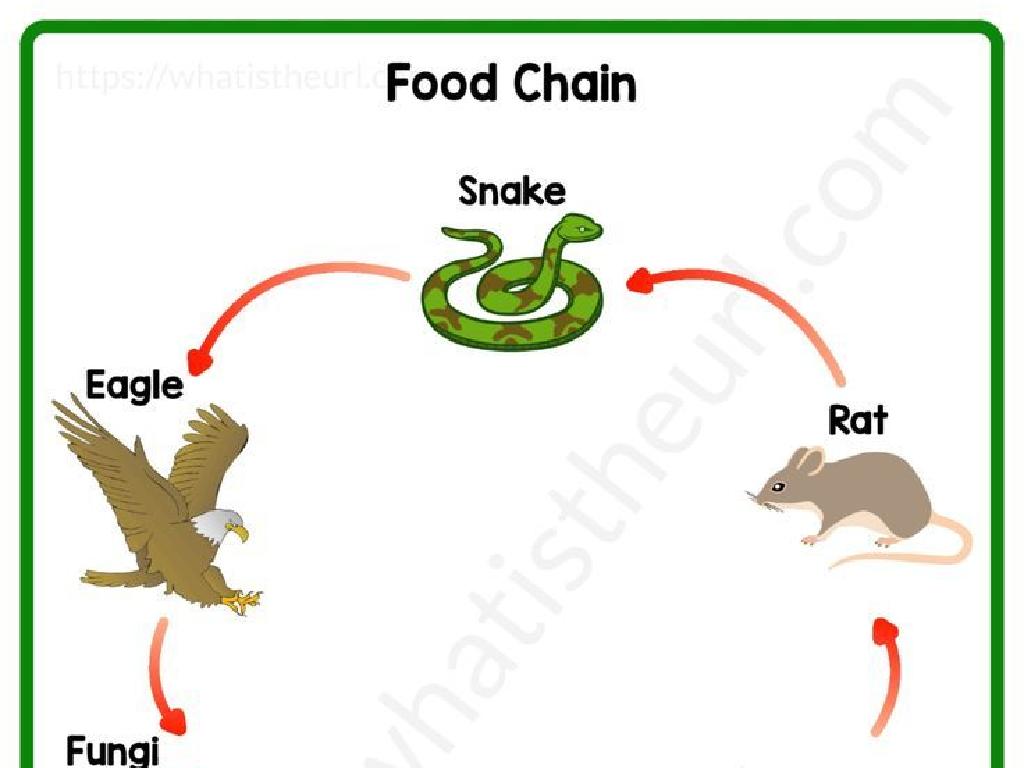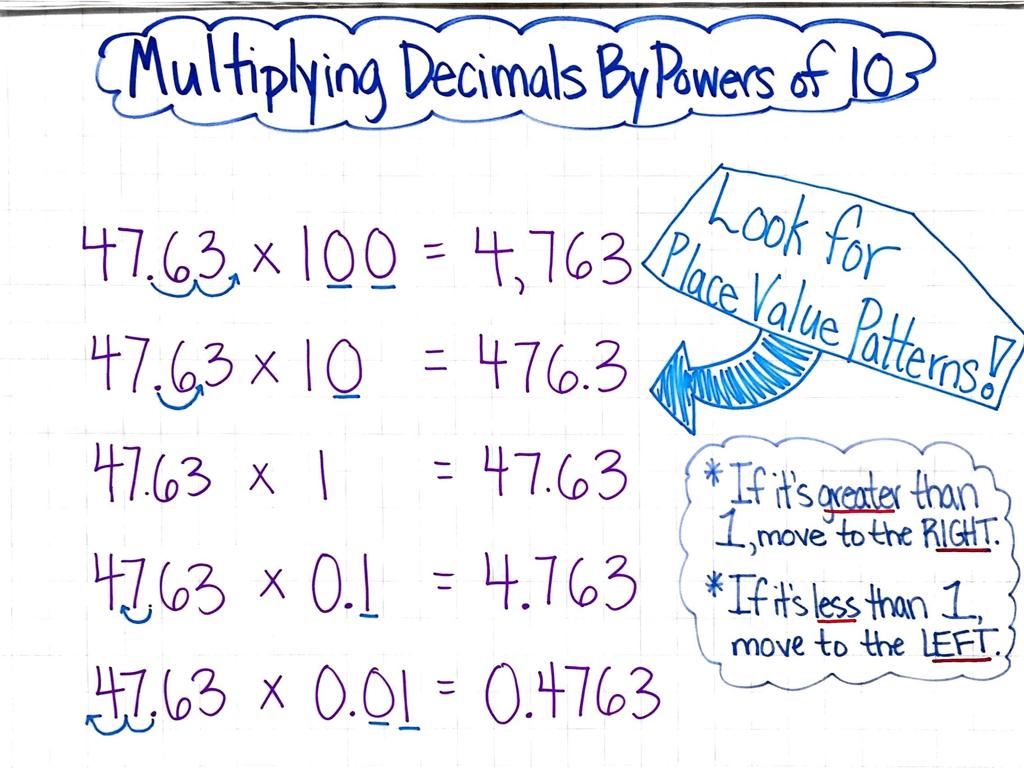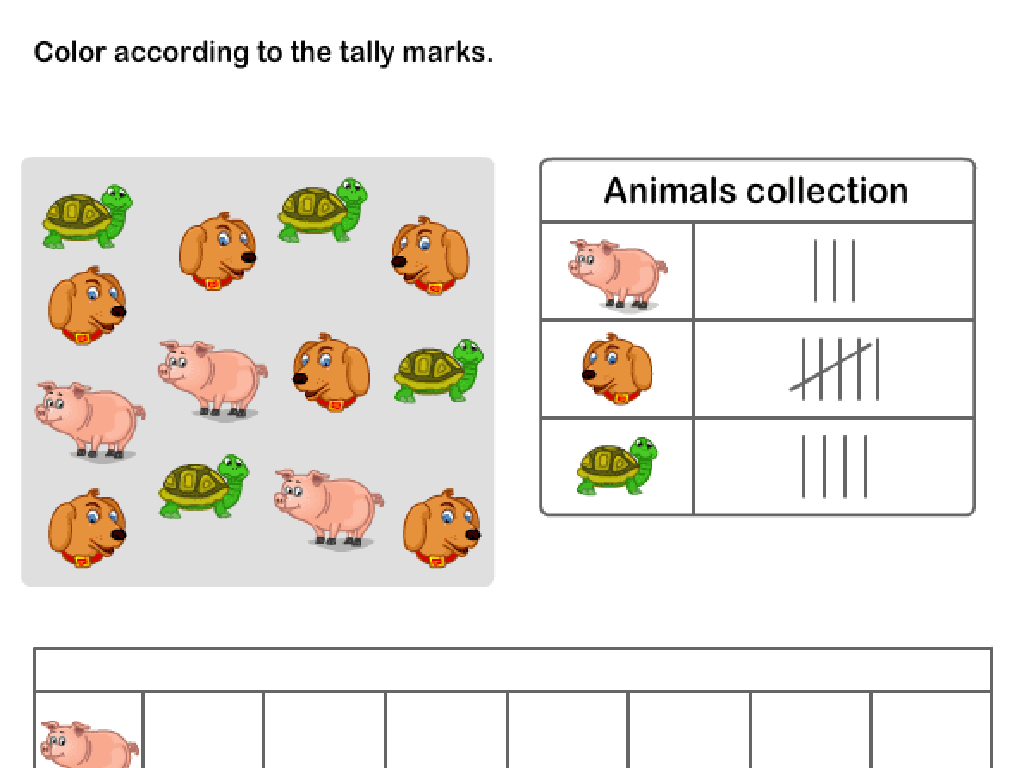Follow Directions On A Coordinate Plane
Subject: Math
Grade: Fifth grade
Topic: Coordinate Plane
Please LOG IN to download the presentation. Access is available to registered users only.
View More Content
Welcome to the Coordinate Plane!
– What is a Coordinate Plane?
– A flat surface with two number lines: the x-axis and the y-axis.
– Coordinate Planes in Math
– Helps us locate exact points using coordinates (x, y).
– Real-world use of Coordinates
– Used for maps, video games, and even construction!
– Practice plotting points
– Let’s plot (2,3) and (4,5) on the plane.
|
Introduce the coordinate plane as a fundamental concept in mathematics that allows us to visualize and locate points using two perpendicular lines, known as axes. Explain that the coordinate plane is not just a math tool but is also used in various real-life situations such as navigation, computer graphics, and engineering. Emphasize the importance of understanding how to read and plot points on the plane. Provide students with simple coordinates to plot as a class activity, ensuring they grasp the concept of ordered pairs and the significance of the x and y positions.
Exploring the Coordinate Plane
– What is a coordinate plane?
– A flat surface with two number lines: horizontal (X-axis) and vertical (Y-axis).
– Key parts: X-axis, Y-axis, origin
– The X-axis runs left to right, Y-axis runs up and down, and the origin is where they meet (0,0).
– Understanding quadrants
– The plane is divided into 4 parts called quadrants, labeled I, II, III, IV.
– Navigating the coordinate grid
– Use the X and Y values to find points on the grid, like a treasure map!
|
This slide introduces students to the fundamental concept of the coordinate plane, which is an essential part of their mathematics curriculum. Begin by defining the coordinate plane as a two-dimensional surface formed by the intersection of two number lines, the X-axis, and the Y-axis. Emphasize the importance of the origin, the point where both axes meet at zero. Explain the concept of quadrants and how they are labeled using Roman numerals I through IV, starting from the top right and moving counter-clockwise. Lastly, illustrate how to navigate the coordinate plane by plotting points using ordered pairs. Encourage students to think of the coordinate plane as a map that helps us find the exact location of points.
Plotting Points on a Coordinate Plane
– Plot points using coordinates (x, y)
– Each point is placed using an x (horizontal) and y (vertical) value
– Let’s practice plotting points
– We’ll plot points as a class activity
– Determine the quadrant of each point
– Quadrants are the four sections of the plane
– Understanding the coordinate plane
|
This slide introduces students to the basics of plotting points on a coordinate plane. Start by explaining the concept of the coordinate plane, with its horizontal (x-axis) and vertical (y-axis) lines. Demonstrate how to plot a point by starting at the origin (0,0) and moving along the x-axis and then the y-axis to the correct location. Engage the class in a hands-on activity where they plot given points on their own coordinate planes. After plotting, guide them to identify in which of the four quadrants their point lies. The goal is to ensure students can confidently plot points and understand the layout of the coordinate plane, including its quadrants.
Navigating the Coordinate Plane
– Moving on a coordinate plane
– Up and down change the y-value, left and right change the x-value
– Units of movement explained
– Each unit represents one step in any direction
– Example: (2, 3) to (2, 5)
– Moving up increases y by 2 units without changing x
|
This slide introduces students to the concept of movement on a coordinate plane, which is a crucial part of understanding graphing and geometry. Emphasize that moving up or down affects the y-coordinate, while moving left or right affects the x-coordinate. Each ‘unit’ of movement is one step on the grid. Use the example of moving from point (2, 3) to point (2, 5) to show that moving up two units increases the y-coordinate by 2 while the x-coordinate remains the same. Encourage students to practice by plotting both points and drawing the path of movement. This will help them visualize how coordinates change with movement on the plane.
Navigating the Coordinate Plane
– Connect points to create a path
– Read instructions to move points
– Example: Origin to (0,4) to (3,4)
– Start at (0,0), go up to (0,4), then right to (3,4)
– Practice with different paths
– Try plotting a path from (2,3) to (2,5) to (5,5)
|
This slide introduces students to the concept of following directions on a coordinate plane. Students will learn how to create a path by connecting points on the grid and how to interpret instructions to move from one point to another. The example provided will help them visualize the process: starting at the origin (0,0), moving 4 units up on the y-axis to reach (0,4), and then moving 3 units to the right on the x-axis to reach (3,4). Encourage students to practice by plotting different paths and to think of the coordinate plane as a map. In the next class, provide various sets of instructions for students to follow and create their own paths on the plane.
Let’s Practice Together: Plotting a Mystery Shape
– Class activity: Plot points on a plane
– Follow directions to find each point
– I’ll give you coordinates, and you plot them
– Connect the points to form a shape
– After plotting, draw lines between points
– Guess the mystery shape!
– What shape do you think it is?
|
This class activity is designed to help students understand how to follow directions on a coordinate plane and recognize shapes formed by connecting points. Provide students with a list of coordinates to plot on their coordinate planes. Once they have plotted all points, instruct them to connect the points in the order they were plotted to reveal a mystery shape. Possible shapes could be a square, triangle, or rectangle. Encourage students to guess the shape before revealing it. This activity will reinforce their understanding of the coordinate plane and how to navigate it. Make sure to walk around the classroom to assist any students who may be struggling with plotting the points correctly.
Coordinate Plane Games
– Play Coordinate Plane Bingo
– Match coordinates to their location on the grid to win
– Go on a Treasure Hunt
– Use coordinates to find hidden treasures on the plane
– Coordinate Plane Pictionary
– Guess shapes from points plotted by classmates
– Enhance spatial understanding
|
This slide introduces interactive games to help students understand and enjoy learning about the coordinate plane. Coordinate Plane Bingo will involve matching coordinates to their correct location on the grid, reinforcing their knowledge of the x and y axes. The Treasure Hunt game will have students use specific coordinates to find hidden ‘treasures’ around the classroom, which makes learning about coordinates a fun adventure. Coordinate Plane Pictionary will have students guess shapes or objects from points plotted on the plane by their classmates, enhancing their ability to visualize and interpret coordinate pairs. These activities are designed to make the concept of the coordinate plane engaging and to improve students’ spatial reasoning skills.
Wrapping Up: Coordinate Planes
– Review of coordinate plane concepts
– Practice is key to mastery
– Homework: Plot points on a plane
– Points like (2,3), (4,-1), (-3,5), (0,0)
– Bring questions next class
|
As we conclude today’s lesson, it’s important to recap the key concepts of coordinate planes, emphasizing the x-axis (horizontal) and y-axis (vertical), and how to plot points where these lines intersect. Stress the importance of regular practice to become comfortable with plotting points and reading coordinates. For homework, students are given a list of points to plot on a coordinate plane to reinforce their understanding. This task will also help identify any areas where students may need further clarification. In the next class, we will review the homework, answer questions, and continue building on these foundational skills.






